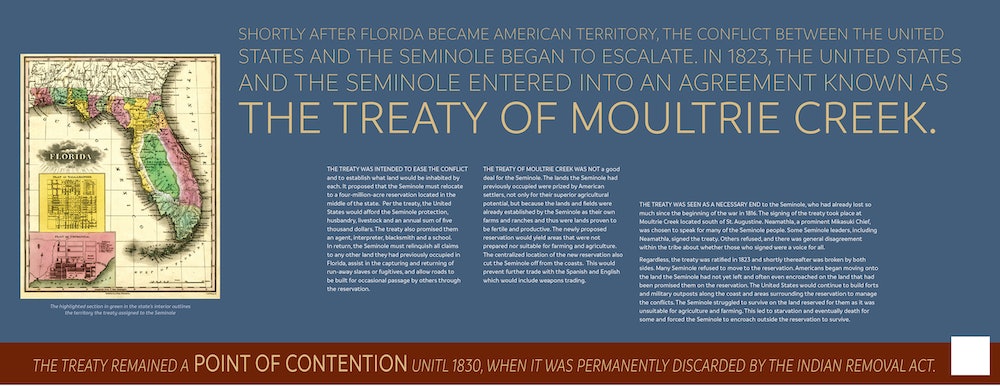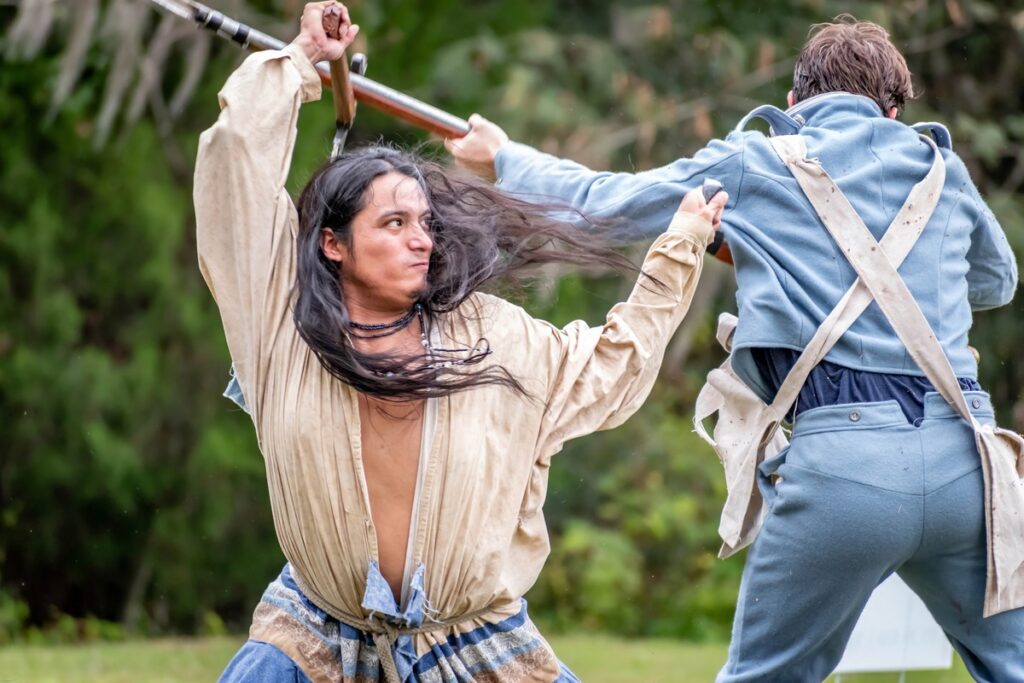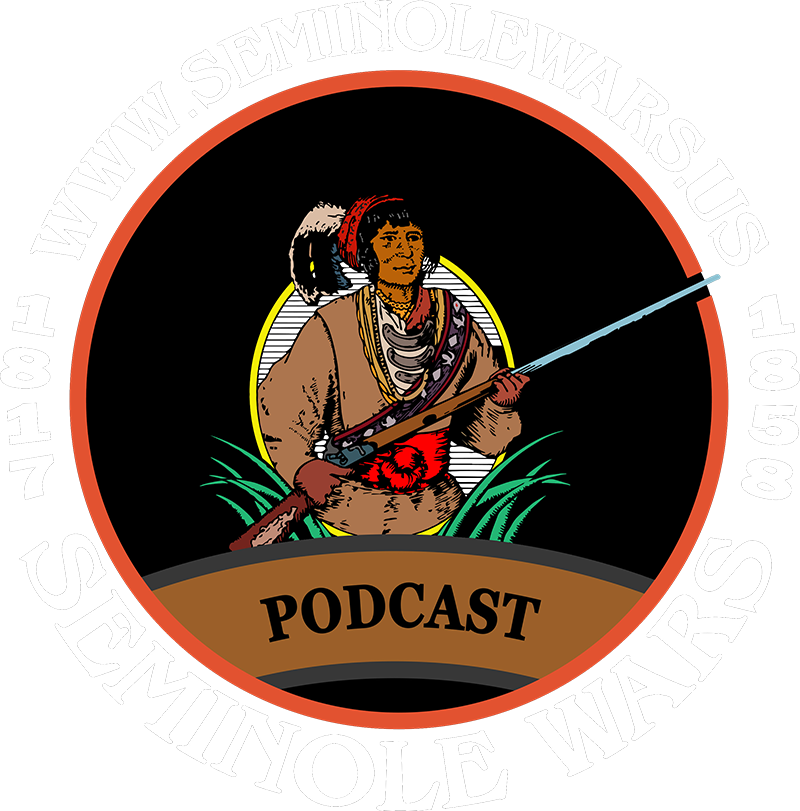Fort King was a pivotal location at the onset of the Second Seminole War, particularly in the infamous Dade Massacre. The moment Florida became a U.S. territory, the government’s efforts to relocate the Seminoles from their ancestral lands set in motion a series of events marred by escalating tensions and breached agreements. The critical negotiations at Fort King, culminating in the assassination of Indian Agent Wiley Thompson, further fueled the hostilities. This chain of events led to the ambush of a group of reinforcements headed to Fort King, a contingent commanded by Major Dade. This ambush was not just a singular act of defiance but a significant catalyst that ignited the full scale of the Second Seminole War.
The Start of the Relocation

The First Seminole War, concluding in 1818, marked the beginning of a tumultuous era in Florida’s history. This period saw continuous military actions until 1821, when Spain officially relinquished Florida, paving the way for its establishment as a U.S. territory. The ink had barely dried on this territorial declaration when the U.S. government initiated a campaign to persuade the Seminole people to vacate their ancestral lands in Florida and relocate to designated reservations in what is now Oklahoma.
In a pivotal move in 1823, the U.S. government and the Seminole leaders created the Treaty of Moultrie Creek. This agreement was a cornerstone in the American government’s strategy for the relocation of the Seminoles. Its primary objective was to confine the Seminole population to a designated reservation within Florida. As part of the treaty, the U.S. government committed to providing the Seminoles with food rations, and it was understood that the Seminoles would be allowed to inhabit this reservation for a period of 20 years.
Poor Conditions on the Reservation
The challenges faced by the Seminoles residing within the confines of the reservation were amplified by the harsh realities of their new environment. The soil on the reservation was of poor quality, and unsuitable for sustainable agriculture, and prolonged droughts further exacerbated their plight, leading to severe food shortages. These dire circumstances compelled many of the Seminoles to venture beyond the reservation boundaries in a desperate quest for sustenance.
In their search for food, some Seminoles resorted to slaughtering cattle belonging to settlers, an act born out of necessity rather than malice. This situation led to an unintended but significant situation: Seminoles leaving the reservation began to ally with more militant factions who had never acknowledged the Treaty of Moultrie Creek. This alliance underscored the growing discontent and resistance among the Seminole people, driven by the untenable conditions and broken promises that characterized their experience on the reservation.
Change of Plans: Remove all Seminoles from Florida

Because of the aggressions, the U.S. government orchestrated a delegation of Seminoles to travel to the Indian Territory in the West, to assess the land designated for their relocation. This initiative coincided with the government’s decision to cease providing food supplements to the Seminoles, a move that further strained relations. This inspection trip was not without controversy; many believed that the delegation was shown only the most favorable parts of the reservation, painting an unrealistically positive picture of their future home.
During this visit, the Treaty of Fort Gibson was signed, marking a significant shift in the timeline for the Seminoles’ relocation. The treaty stipulated a new three-year schedule for the removal of all Seminoles from Florida, with a third expected to move each year. However, there were widespread suspicions that interpreters were bribed to misrepresent the treaty’s contents to the Seminole delegates.
The signing of the Treaty of Fort Gibson ignited fierce opposition among the more militant Seminole chiefs in Florida. This development made the task of Wiley Thompson, the newly appointed Indian Agent at Silver Springs, increasingly challenging. His role was to persuade the Seminoles to comply with the Fort Gibson treaty. However, many Seminoles were reluctant to move west. Moreover, they believed the U.S. government should uphold the 20-year residency term agreed upon in the Treaty of Moultrie Creek.
Thompson’s report to President Andrew Jackson in October 1834 highlighted the growing rifts within the Seminole community and the escalating tensions between the Seminoles and white settlers. President Jackson’s response was decisive; he ordered a substantial military deployment to both safeguard American citizens and enforce the treaty’s terms regarding the Seminoles’ relocation. This directive underscored the increasing severity of the situation and the government’s commitment to enforcing its policies, regardless of the growing unrest and opposition among the Seminole people.
This led to growing unrest amongst the Seminoles. Violence between Indians and settlers in Florida reached unprecedented levels throughout 1835. An intense skirmish occurred between local militia and Indians near Gainesville in June, and in August Seminoles killed Private Kinsley H. Dalton while he was delivering mail from Fort Brooke to Fort King.
Recognizing the growing strength and organization of the Seminole opposition, especially around charismatic leaders like Osceola and Halpatter Tustenuggee, known also as Alligator, General Duncan L. Clinch, the commanding officer in the region, saw the urgent need for additional military support. He reached out to the War Department.
Responding to Clinch’s request, the War Department dispatched a significant military reinforcement, comprising 10 companies of Regular infantry. General Clinch strategically positioned these forces across key locations in Florida to maximize their impact. Six of these companies were dispatched to Fort King.
The Fort King Negotiations
“There remains nothing worth words. If the hail rattles, let the flowers be crushed – the stately oak of the forest will lift its head to the sky and the storm, towering and unscathed.”
Osceola at the Fort King negotiations
At this point, a meeting was held with General Wiley Thompson, the Indian Agent. Osceola, who lacked formal status as a chief, attended this meeting alongside the venerable Chief Micanopy. In a subtle display of influence, Osceola whispered advice to Micanopy, guiding the chief’s responses during the discussions. The meeting took a dramatic turn when General Thompson declared that the Seminoles would no longer receive financial assistance from the government. This announcement provoked a fierce reaction from Osceola, who stood up and vehemently declared that the Seminoles did not need the government’s money, referring to the President as the “Great Father.”
It was during this heated exchange that the legendary tale of Osceola’s defiance was born. According to the story, in a symbolic gesture of rejection, Osceola dramatically thrust his knife into the treaty document or the table, proclaiming that this act represented his only agreement with the white settlers. This moment encapsulated his unwavering stance against the treaties and his commitment to Seminole sovereignty.
The Arrest of Osceola and its Repercussions
The situation escalated when the government learned that the Seminoles were amassing large quantities of gunpowder. In response, the government prohibited further sales of gunpowder to them, a decision that deeply angered Osceola. He passionately questioned if he was being treated as a slave, asserting his identity as a proud Seminole.
Around this time, Osceola frequently visited General Thompson’s headquarters at Fort King, where his confrontational attitude led to his temporary imprisonment. He was released only after conceding to the terms set by Thompson and expressing a willingness to leave the territory. However, shortly after his release, Osceola returned to Fort King with seventy warriors, claiming they were all ready to follow the government’s directives. These warriors subsisted on government provisions for a time before mysteriously disappearing into the Floridian swamps and hammocks. It wasn’t long before reports surfaced that Osceola had initiated a campaign of resistance, marking the beginning of his legendary warpath against the U.S. government and its efforts to relocate the Seminole people.
On December 18, 1835, the first major clash of the Second Seminole War happened. Under Osceola’s leadership, a group of 80 Seminoles executed a daring ambush on a supply train south of Gainesville in what became known as the Battle of Black Point. This attack resulted in 14 casualties among the whites, either killed or wounded. In response, a newly assembled militia swiftly arrived at the scene, managing to recover some of the lost property. However, the Seminoles, known for their guerilla warfare tactics, had already vanished into the landscape, eluding capture.
This attack was the culmination of over a year of meticulous planning by Osceola, Alligator, and other Seminole leaders. Their strategy involved raiding settlements for food and cattle and launching targeted strikes against federal forces. Driven by a sense of vengeance, Osceola was also plotting the assassination of Agent Thompson, aiming to retaliate for the personal affront and broader injustices he and his people had suffered.
Ambush of General Thompson

Seminole leaders were strategizing to maximize their assaults against the thinly spread U.S. forces in Florida. By mid-December, the reservation was almost deserted, with the Seminoles vanishing into their familiar territories, evading detection and preparing for further engagements.
Their awaited opportunity arose when General Clinch, in an effort to safeguard his plantation and the surrounding areas from Seminole raids, constructed Fort Drane, about 20 miles northwest of Fort King. He redeployed soldiers from Fort King to Fort Drane, significantly weakening Fort King’s defenses. This strategic error played right into Osceola’s hands, enabling him to plot the assassination of Agent Thompson. Concurrently, Clinch ordered reinforcements from Fort Brooke to Fort King, unaware that he was sending them into a potential Seminole ambush.
Osceola and his followers had stealthily positioned themselves near Fort King, biding their time for the right moment to strike. One fateful afternoon, as General Thompson and Lieutenant Smith strolled unsuspectingly away from the fort, Osceola seized his chance. In a sudden and lethal ambush, both the general and lieutenant were fatally shot. The assailants then attacked a nearby settler’s store, killing the employees, setting fire to the building, and swiftly retreated to join their comrades in the Big Wahoo Swamp along the Withlacoochee River.


